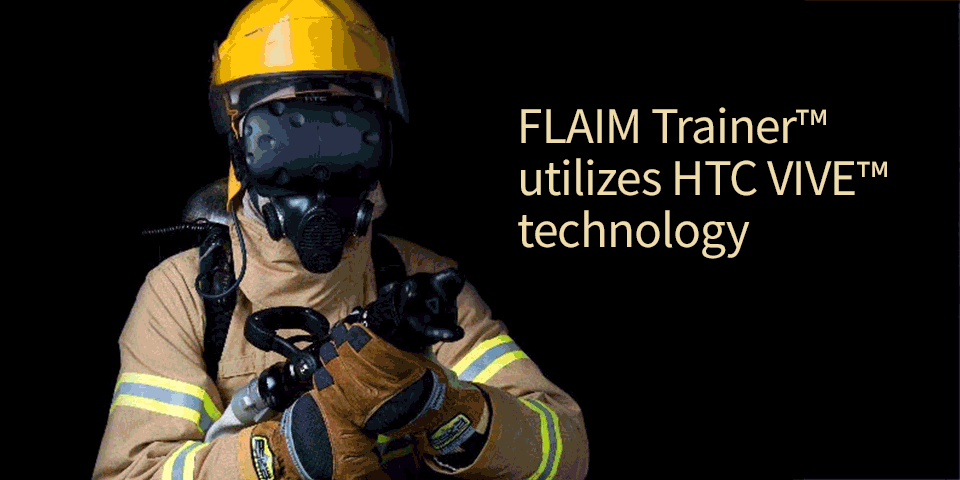Firefighter training is an excellent example of how Virtual Reality can sharpen situational awareness skills and allow firefighters to “practice” working under difficult and dangerous conditions. VR training greatly reduces risk and eliminates destruction of the training environment. And, team members can repeat exercises indefinitely.
At CES 2017, FLAIM Trainer™ was presented as one of several use cases of HTC’s Vive Tracker accessories, which can track the movements of people or objects and replicate them in a virtual world. In this case, the tracker is attached to the end of a firehose, allowing trainees to extinguish virtual fires with real-world equipment.

Immersive VR is combined with a patented haptics feedback system and real equipment to simulate emergency scenarios. The system was designed and developed by volunteer firefighter Associate Professor James Mullins of the Institute for Intelligent Systems Research and Innovation (IISRI) at Deakin University.*
The FLAIM Trainer™ system consists of a head mounted VR display with a realistic breathing apparatus kit; a hose-line system and protective clothing with heat generation components. Dimension Data partnered with FLAIM to provide a hitoe vest which picks up the electrocardiogram (ECG) readings of the wearer and records their physiological response and performance. This data helps instructors evaluate results over time.
FLAIM Trainer™ offers firefighters the opportunity to train in situations and scenarios that are:
- Inherently unsafe and difficult to reproduce.
- No longer possible due to environmental, community and regulatory constraints.
- Significantly costly in terms of time, personnel and assets.
“With firefighters facing long periods of inactivity and fighting fewer fires than ever before, this co-innovation initiative will significantly boost the fitness and effectiveness of firefighters all around the world and put them in the best possible position to keep safe and protect our communities,” says Ken Mahon, Director Ventures of Deakin Research Innovations.
Rivierduinen, of the largest mental health care facilities in Zuid-Holland, is one of the first healthcare institutions to use VR technology for fire safety preparation. Realistic risk scenarios define their approach, and help set standards for emergency response protocols and evacuation.
A Virtual Reality environment was created by The Virtual Dutch Men, who scanned the location and authored action scenarios for the facility based on strategic learning objectives. They actively involved users and encouraged feedback during each step of the development process. The collaboration resulted in a VR scenario that provides insight into potential challenges of an escalating situation and allows teams to practice responding to events until they become familiar.
While close collaboration with industry personnel to understand their needs is a critical factor, another key to the successful development of fire simulation software is high-level scientific physical modeling. Computational Fluid Dynamics software predicts the behavior of fire, smoke and released fluids within structures and across terrain. 3D models based on CFD equations describe how pressure, velocity, density and temperature are related, giving insight into flow patterns that would be difficult, expensive or impossible to study using traditional techniques.
“They showed us possibilities that we never could have imagined. They also translated our challenge into a targeted VR scenario that helps our employees practice their emergency response skills in a more realistic and interactive way.”
—Rob Bergmans, Rivierduinen
With the maturation of 3D graphics, wearable tracking devices, sensors, and image processing, firefighters can now simulate emergency situations within realistic environments in order to safely develop procedures for emergencies. It will be interesting to see what new developments In VR training technology are unveiled at CES in 2019.
_________________________
sources:
